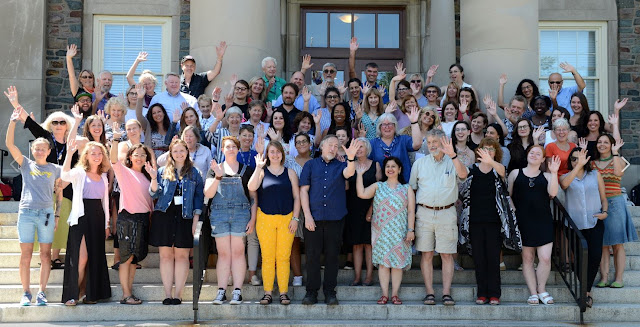Title: The
Wake: The Deadly Legacy of a Newfoundland Tsunami
Author: Linden
MacIntyre / Genre: Non-fiction / Publisher: HarperCollins
KEN MCGOOGAN
SPECIAL TO THE GLOBE and mail
On Feb. 15, 1965, a retired miner named Rennie
Slaney sat down at his kitchen table in St. Lawrence, Nfld., and typed out a
five-page, single-spaced document that, as Linden MacIntyre writes in The
Wake, would reverberate “across the land.” The 58-year-old Slaney, who could no
longer work because of severe health problems, laid out what had happened in
recent decades to the people of his small community on the Burin Peninsula.
Addressing his testimonial to a special
committee appointed by the government of Premier Joey Smallwood, Slaney
mentioned a miner who died in hospital that very day, while another lay nearby,
“just awaiting his time.” Slaney himself, having worked in the mines for 23
years, was suffering from chronic bronchitis, obstructive emphysema, infective
asthma and “a usually terminal heart disease caused by lung failure.” The man
could step forward because, MacIntyre tells us, he had nothing left to lose:
“His lungs were shot.”
Having toiled mostly as a foreman, Slaney
described how each day, after surfacing from the smoke-and-dust-filled
underground mine, he and the other men “would throw up for as long as an hour
and then some. After a while the throw-up would be mostly blood.”
The ensuing deaths, Slaney wrote, left
hundreds of children and women destitute, struggling to survive on minuscule
government handouts. Yet, the most powerful part of the report came at the end,
when Slaney presented a list of 91 men he had known personally who were now
dead of mining accidents or illnesses. He cited another 20 who were so sick
they could no longer work.
Slaney’s testimonial made headlines. It led
eventually to amelioration, and MacIntyre tracks that. But The
Wake is most remarkable for the long, slow buildup to this moment, as the
author shows how the mining debacle evolved directly out of an earthquake and a
tsunami that occurred decades before – on Nov. 18, 1929.
The main narrative begins on that day with a
vivid evocation of white-water waves three-stories high crashing over the
Newfoundland coast at 100 kilometres an hour. The tsunami washed away houses,
killed 28 people and rendered hundreds more homeless. Not incidentally, that
cataclysm also wiped out the cod fishery, the alpha and omega of the local
economy.
Survivors awoke to widespread devastation.
Some people abandoned the only home they had ever known and moved into St.
John’s or Halifax. But with the fish gone, those who wanted to stay were more
than willing to listen when an American engineer named Walter Siebert turned up
talking about creating a mining company.
Siebert explained that initially, he could not
afford to pay men to work. But if they did so voluntarily, he would make things
right down the road. And so, through the Great Depression of the 1930s, when
options were precious few, the men worked for nothing or a pittance. Siebert
could not afford to create the ventilation shafts requisite to any proper
mining operation, but the miners worked any way, enduring appalling conditions
so they could feed their families.
MacIntyre does more than relate this powerful
story. An award-winning novelist, he raises the book to the level of
literature, first by drawing on exhaustive research to produce vivid, sometimes
unpleasant detail. For example, he interviewed women who laboured to ease the
passing of the dying – nurses, he writes, who had a far deeper understanding of
the slow-motion catastrophe unfolding on the Burin Peninsula than any
scientists, lawyers or politicians.
One of them, Rennie Slaney’s granddaughter,
Lisa Loder, told him that those who had heart attacks were the lucky ones. “I
witnessed a good many poor souls,” she said, “when their lungs totally
collapsed and they’d bleed out and basically choke on their own blood.”
While en route to creating literature,
MacIntyre takes a risk that pays off: He incorporates four italicized sections
he calls “conversations with the dead.” With this daring stroke, he brings
himself into the narrative, introducing the personal presence that is widely
regarded as the hallmark of literary non-fiction. This move is only possible
because MacIntyre’s long-dead father, his main interlocutor in these sections,
worked in one of the underground mines later found to be radioactive.
MacIntyre ends on a cautiously optimistic note
because “the memory of bad luck, bad faith, bad management and bad government
should serve the future well.” The key word is “cautiously” because “the
future, like the past, will also be determined by necessity.”
As for Rennie Slaney, he was 62 when, four
years after typing out his testimonial, he died luckily of a heart attack. An
autopsy “revealed deep, debilitating silicosis in his lungs.” MacIntyre tells
us: “Rennie Slaney, like so many of his friends and neighbours, died because of
how he’d earned his living.”
This book ensures that his death was not in
vain.
Click here to read the original.
Ken McGoogan’s new book is Flight of the
Highlanders: The Making of Canada.


















